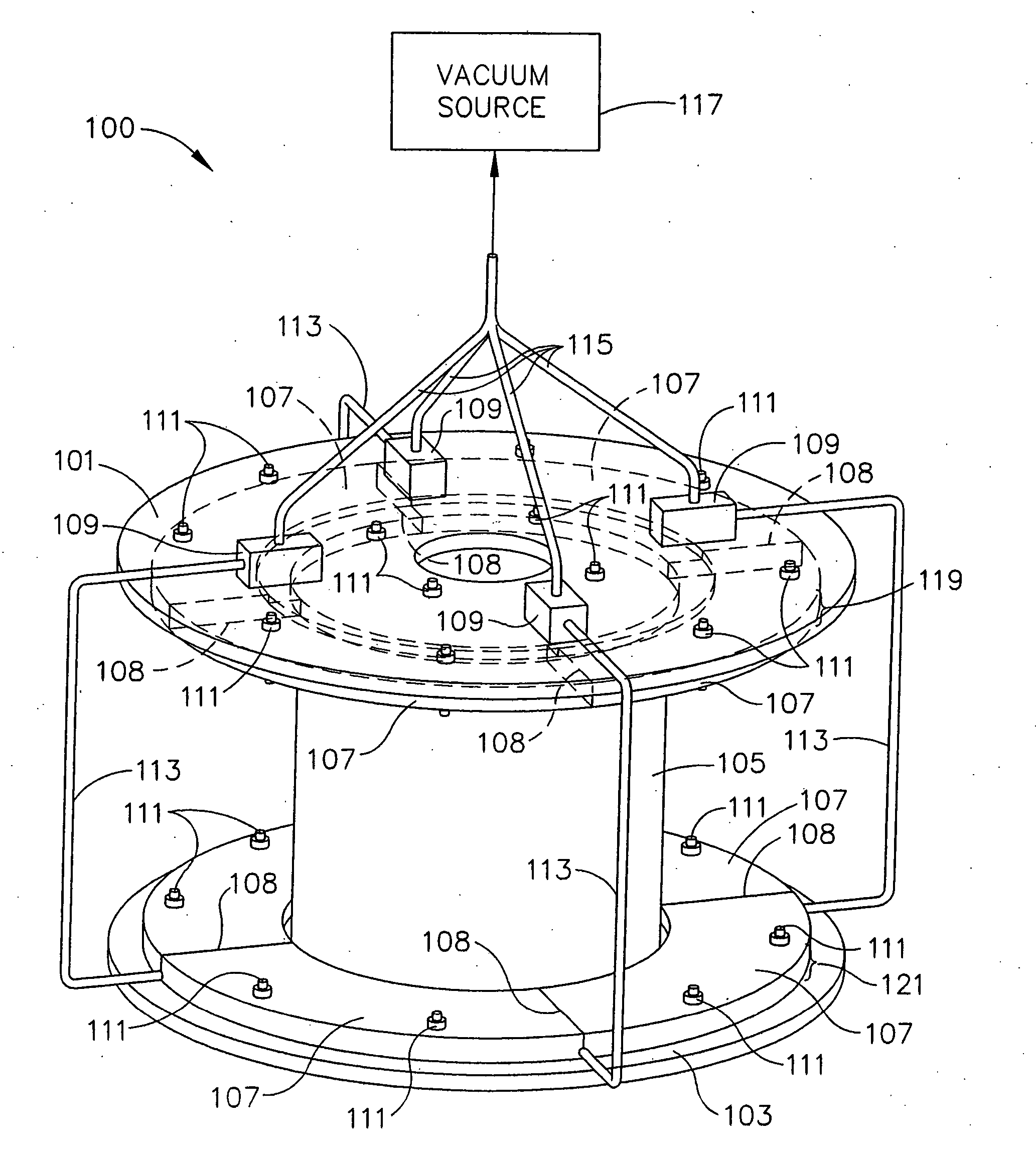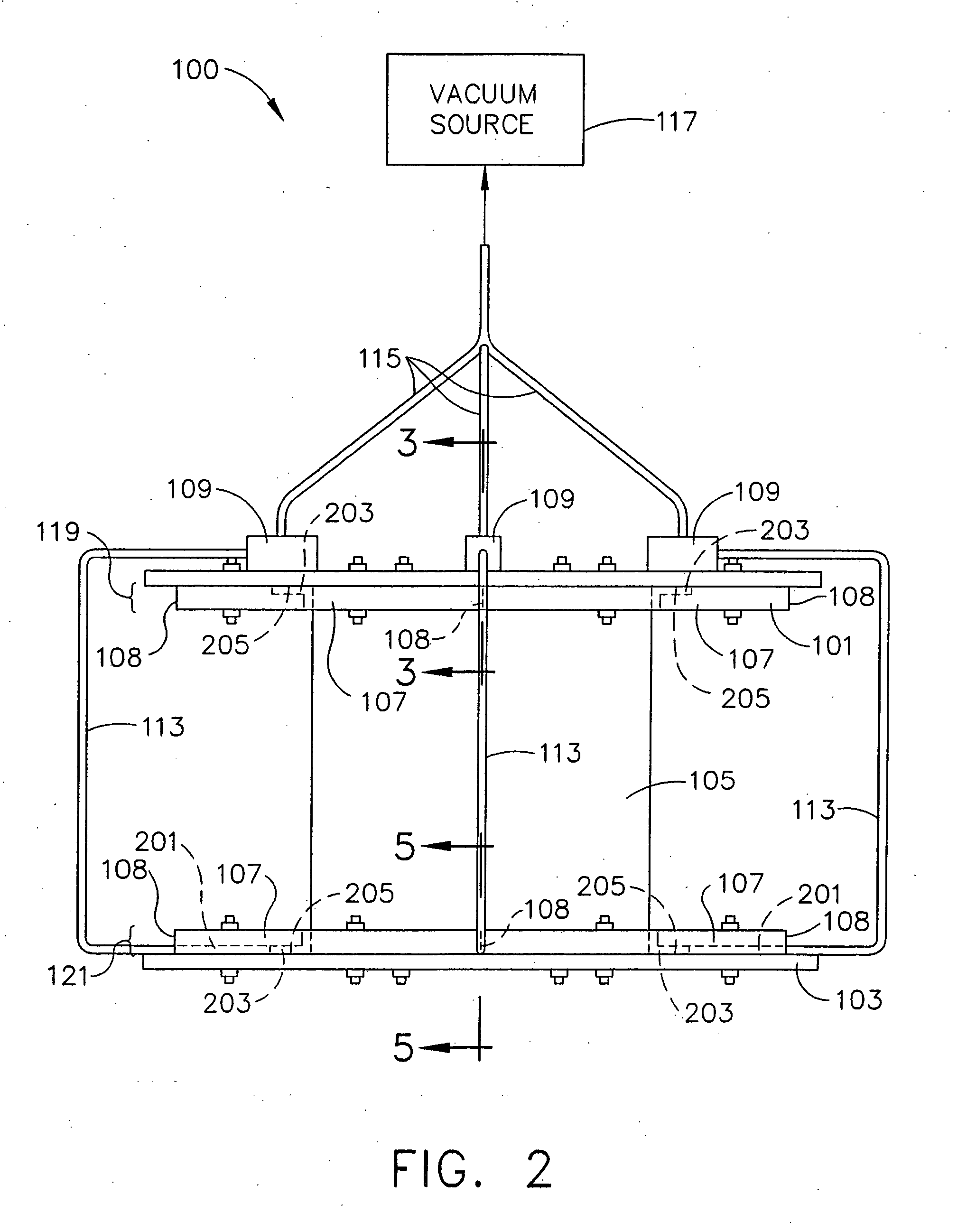Method for fabricating reinforced composite materials
- Summary
- Abstract
- Description
- Claims
- Application Information
AI Technical Summary
Benefits of technology
Problems solved by technology
Method used
Image
Examples
Embodiment Construction
[0028]FIG. 1 shows a composite duct-forming tool 100 according to the present invention. The tool 100 includes a substantially cylindrical body 105. A first endplate 101 and a second endplate 103 are positioned adjacent to the opposed planar ends of the body 105. The body 105 and first and second endplates 101 and 103 are fabricated from a material having a greater thermal coefficient of expansion than the workpiece held by the tool 100. Material for the body 105 and first and second endplates 101 and 103 include, but are not limited to, metals or alloys. Suitable materials for the body 105 include aluminum and steel. The first endplate 101 is fastened to the body 105 with stress relief fasteners 111. The second endplate 103 adjacent to the body 105 is attached to the body 105. The body 105 has a substantially cylindrical geometry. The substantially cylindrical body 105 preferably tapers from a smaller diameter adjacent to the first endplate 101 to a larger diameter at the second en...
PUM
| Property | Measurement | Unit |
|---|---|---|
| Fraction | aaaaa | aaaaa |
| Fraction | aaaaa | aaaaa |
| Temperature | aaaaa | aaaaa |
Abstract
Description
Claims
Application Information
 Login to View More
Login to View More - R&D
- Intellectual Property
- Life Sciences
- Materials
- Tech Scout
- Unparalleled Data Quality
- Higher Quality Content
- 60% Fewer Hallucinations
Browse by: Latest US Patents, China's latest patents, Technical Efficacy Thesaurus, Application Domain, Technology Topic, Popular Technical Reports.
© 2025 PatSnap. All rights reserved.Legal|Privacy policy|Modern Slavery Act Transparency Statement|Sitemap|About US| Contact US: help@patsnap.com



